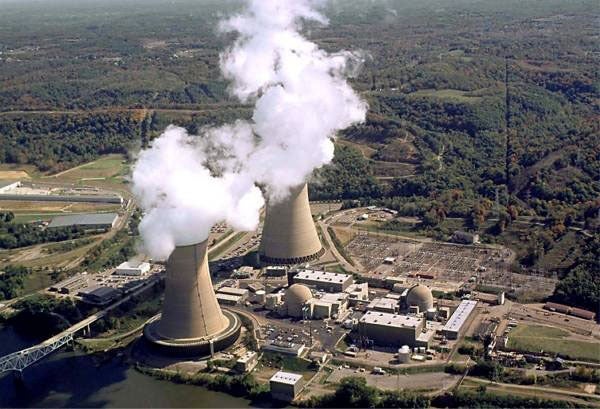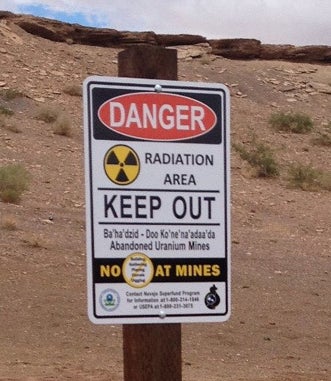
Beaver Valley Power Station, Shippingport, PA
Six years after the Fukushima nuclear power plant triple meltdown left Japan with a $235 billion clean-up bill, President Trump ― the number-crunching businessman ― should give second thought to propping-up an industry neither the market nor the taxpayer can afford to support.
As a “builder,” it is doubtful Trump would pour money into projects where billion-dollar cost over-runs have become the norm and it costs more to dismantle a facility than to build it.
The March 11, 2011, Fukushima Daiichi nuclear accident sent global firms and regulators scrambling in search of better designs. Meanwhile, the decontamination costs of the surrounding Fukushima area reached some $22.7 billion by the end of 2016 and the total cost evacuee compensation and the reactors’ dismantling will exceed $236 billion, says Japan’s Economy Ministry.
Trump has expressed tepid support for nuclear energy, though his pick to lead the Department of Energy, former Texas Gov. Rick Perry, supported nuclear waste storage in Texas.
Trump’s transition team surveyed the Energy Department on how to keep aging US nuclear reactors “operating as part of the nation’s infrastructure,” as well as how to reduce bureaucratic red-tape on exporting US nuclear energy technology and finishing the Yucca Mountain Nuclear Waste Repository.
But the US nuclear energy industry is facing its own financial meltdown, and throwing more money at propping up the industry won’t solve the financial issues nuclear power has had from the start.
That’s because old nuclear power plants are too expensive to operate in a market dominated by plummeting natural gas and renewable energy costs, forcing many nuclear reactors to the brink of closure.
And the first company to build a US nuclear power plant since the 1979 Three Mile Island accident is now facing delays, costs over-runs and bankruptcy, instead of leading the much-touted nuclear renaissance.
Toshiba’s Westinghouse Electric subsidiary received $6.5 billion in US government loan guarantees in 2014 from the Obama administration to build reactors in Georgia and South Carolina using a new generation AP1000 reactor from Westinghouse. But three years late and over budget by billions, Westinghouse - one of the last US nuclear plant builders ― is considering bankruptcy while parent company Toshiba’s CEO resigned as the firm took $6.3 billion in losses.
The nuclear industry says soaring costs to build new plants combined with the overdue retirement of older plants is why it needs fresh government subsidies to keep existing plans operating.
The argument has worked in New York and Illinois, which have anted up billions of dollars to save their state’s nuclear plants, prompting the Electric Power Supply Association and American Petroleum Institute to sue the states for perverting the electric market. Nuclear energy lobbyists are now trying to convince other states to adopt similar policies.
The nuclear lobby is also trying to convince states with renewable energy mandates to amend their standards to include the term “emission-free” in order to include nuclear power.
During the Obama Administration, the nuclear industry pushed the idea that it offered emission-free electricity to cater to concerns over climate disruption.
But Trump has dismissed climate change concerns, forcing lobbyists to dust-off old arguments touting nuclear power’s economic benefits in a letter to the Trump administration urging financial support of aging reactors.
The industry is also raising concerns that the United States may get left out of exporting nuclear technology to a global market as China, India and Russia seek to increase their nuclear power capacity, and countries in sub-Saharan Africa are looking to join the nuclear club.
Nuclear Energy Institute President and CEO Maria Korsnick throws in jobs, trade and a sprinkling of world dominance, saying: “To preserve its ability to shape global use of nuclear technology, the US must have both a strong domestic nuclear power program and an aggressive nuclear trade and export program.”
Even Westinghouse - after blowing the only US-funded nuclear deal in decades ― still hopes to complete projects in China and an Obama Administration-backed deal with India.
But these arguments melt down when you factor in all the true costs of nuclear power through the entire mine-to-waste life-cycle, a cost the tax-payer has been saddled with since the 1950s.
The on-going cost of cleaning up the mess of creating the fuel used for nuclear energy becomes a real buzz-kill for the argument of nuclear as “clean” energy.
Nearly 30 million tons of uranium ore were extracted from the Navajo Nation in Arizona and New Mexico between 1944 and 1986 leaving over 500 abandoned mines the US government has still barley cleaned-up after spending over $1.7 billion.

Nobody knows how to deal with the 84,250 tons of used-up radioactive fuel just from commercial reactors that have piled up. Questions remain whether Trump will support continued interim storage of nuclear waste in some 35 states already temporarily holding waste from various nuclear projects, or if he will continue to pour more money into the financial black-hole of the unfinished $30 billion Yucca Mountain Nuclear Waste Repository in Nevada.
So far, the government’s liabilities for nuclear clean-up is estimated at $447 billion, which doesn’t include what future clean-up costs are expected to be with some 100 nuclear power plants in the United States that all will eventually need decommissioning and proper disposal, according to a GAO report.
Looking at other countries, it’s clear the potential costs are staggering:
Decommissioning Taiwan’s three nuclear power plants will cost $20 billion, nearly double the initial estimates by the state-owned utility, and the French Parliament has balked at French utility EDF’s $80.8 billion estimate as too low for closing the utility’s fleet of reactors.
And none of those plants ever had a Fukushima ― or Three Mile Island-like accident.
With the Trump administration in their sights, the big push now from the nuclear industry is advanced nuclear development ― designs that supporters claim use less fuel, produce less waste, cost less and are safer.
Flour Corporation’s NuScale is waiting for design certification from the US Nuclear Regulatory Commission to develop small modular reactors - SMRs - supporters claim are so safe that emergency evacuation requirements should be all but eliminated.
But what developers of small modular reactors are really targeting is the deep-pocketed military since the US Defense Department has indicated plans to replace their diesel field generators with portable SMRs as recommended by a Defense Science Board task force under President Obama last year.
In other words, SMR developers want the Trump Administration to fund the development of SMRs so they can sell SMRs to the Trump Administration.
Other current arguments for resurrecting nuclear power actually get pretty fringe, including the claim that seawater uranium extraction - promoted by Obama’s former US Secretary of Energy and Nobel Prize recipient Steven Chu - can morph nuclear power into “renewable energy.”
America’s aging nuclear power reactors are also now being touted as a part of the nation’s infrastructure and deserving of some of the Trump Administration’s promised trillion-dollar infrastructure money.
These are all arguments calling for one form of financial subsidy or another.
And that’s nuclear energy’s ongoing problem: An industry where the technology is meant to do nothing more than boil water still cannot finance itself after 60 years while hugely underestimating the cost of cleaning-up after their profits have melted down.
Trump ― the number-crunching developer - needs to ask the question: Why support an industry that uses a fuel of such long-term high cost from mine-to-grave over a renewable energy industry where the “fuel” ― wind and sun ― costs nothing and never runs out?
It doesn’t take a nuclear physicist to figure out that continued funding of nuclear power is a really bad deal.
